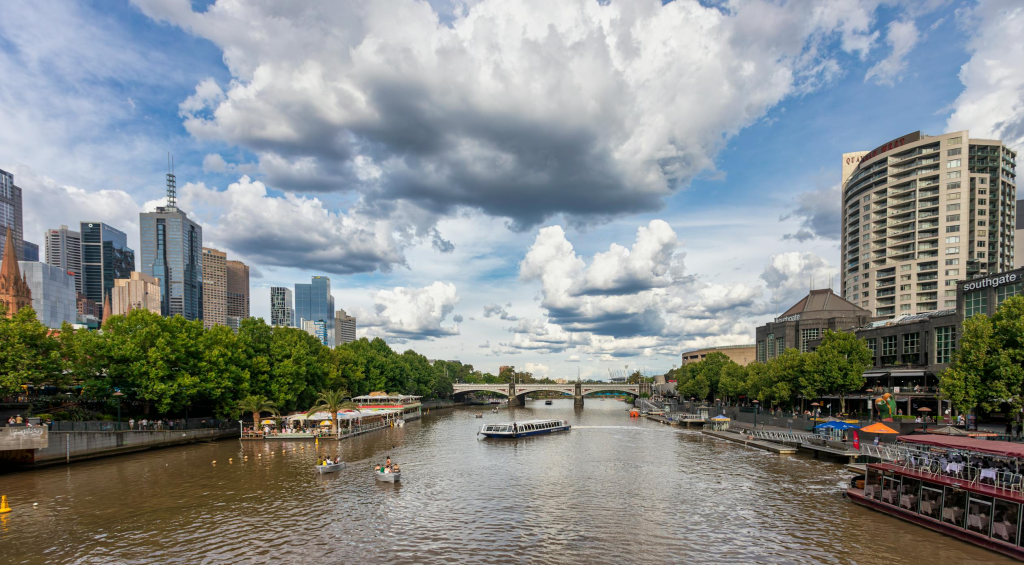Melbourne, often known for its cultural vibrancy, art scenes, and excellent coffee, may not immediately spring to mind when you think of diving hotspots.

However, beneath the waters off the coast of this bustling metropolis lies a treasure trove of underwater experiences that surprise even seasoned divers.
With its cool temperate waters and diverse marine life, Melbourne offers an intriguing alternative to the tropical diving spots typically associated with Australia, like the Great Barrier Reef.
In this article, we’ll explore whether there’s good diving in Melbourne, where you can dive, and what marine life you can expect to encounter.
Is There Good Diving In Melbourne?
The answer is a resounding yes. While Melbourne may not offer the warm waters and coral reefs found in tropical areas, it has a rich variety of dive sites that attract divers from all over the world.
The region is known for its unique underwater landscapes, shipwrecks, kelp forests, and an abundance of marine life.
Melbourne’s Port Phillip Bay and surrounding areas offer an exciting range of dive experiences, suitable for all levels. Whether you’re a beginner diver or an advanced technical diver, you’ll find sites that cater to your skill set and interests.
One of the key attractions for divers in Melbourne is the diverse marine environment. The bay is home to over 300 species of marine animals, many of which are endemic to the region.
One of Melbourne’s most famous dive sites is the HMAS Canberra, a decommissioned warship deliberately scuttled off the coast of Barwon Heads to form an artificial reef.
It lies in around 30 meters of water and is perfect for those who enjoy wreck diving. The ship is intact and offers the chance to explore the eerie corridors, rooms, and outer hull, where fish and invertebrates have taken up residence.
Advanced divers can venture deeper into the wreck, navigating the ship’s inner workings for a thrilling experience.
For those who prefer a more relaxed dive, the Rye Pier and Blairgowrie Marina in Port Phillip Bay are ideal. The piers provide a haven for photographers, thanks to the variety of smaller creatures such as seahorses, nudibranchs, and octopuses.
The structures of the piers are covered in colourful sponges, seaweed, and soft corals, making them visually stunning sites.
These piers are also perfect for night dives, where nocturnal species come out to feed, providing a different perspective on Melbourne’s underwater world.
Where Are The Best Dive Sites In Melbourne?
The diving community thrives because of the variety and accessibility of dive sites melbourne. Whether you want to explore shipwrecks, dive with seals, or marvel at the kelp forests, there’s a site for every type of diver.
- HMAS Canberra Wreck: As mentioned earlier, the HMAS Canberra is one of Melbourne’s premier dive sites. The ship was intentionally sunk in 2009 to create an artificial reef. Over the years, the wreck has attracted a variety of marine life, from schools of fish to larger predators such as sharks. It’s located in around 30 meters of water, making it suitable for intermediate to advanced divers. The thrill of swimming through its passageways and viewing its towering superstructure makes it a must-do for wreck enthusiasts.
- Rye Pier: Rye Pier is popular with divers because of its ease of access and the wealth of life it supports. Divers can expect to see seahorses, cuttlefish, octopuses, and occasionally, Port Jackson sharks. The pier’s pylons are coated with a rainbow of sponges and soft corals, creating a vibrant and colourful backdrop. Night dives are particularly magical, as nocturnal creatures emerge to hunt, and the bioluminescence adds an otherworldly glow to the water.
- Blairgowrie Marina: The Blairgowrie Marina is another favourite among local divers, especially for macro photographers. The marina’s submerged structures are teeming with life, including pipefish, seahorses, and rare species of nudibranchs. The variety of marine creatures and the clarity of the water make it a dream destination for underwater photographers.
- Pope’s Eye: Located within the boundaries of the Port Phillip Heads Marine National Park, Pope’s Eye is a horseshoe-shaped structure originally built as a fortification. Today, it’s a shallow dive site known for its abundant fish life, including large schools of fish that swirl around the man-made structure. The site is also home to seals, which are often seen swimming playfully through the water. Its shallow depth makes it a great spot for snorkelers and beginner divers.
- Mornington Pier: Mornington Pier offers another accessible dive for all levels. With depths ranging from 3 to 8 meters, it’s a shallow but exciting dive. The pier is home to diverse marine life, including rays, small sharks, and colourful nudibranchs. It’s also a great site for a leisurely dive, where you can enjoy the calm waters and the fascinating creatures that live just beneath the surface.
What Marine Life Can You Expect To See?
Melbourne’s temperate waters host a surprising diversity of marine life, much of which is endemic to the region. The cooler waters support species you might not encounter in tropical diving locations, which makes diving here a unique experience.
- Weedy Sea Dragons: One of the most iconic creatures you can spot while diving in Melbourne is the weedy sea dragon, a close relative of the seahorse. These elusive and beautifully camouflaged creatures are endemic to southern Australia, and Melbourne is one of the best places to see them. Their unique appearance, with leafy appendages that help them blend in with the seaweed, makes them a favourite among divers and underwater photographers.
- Seahorses: Port Phillip Bay is home to a thriving population of seahorses, particularly around the pier structures. These fascinating creatures can often be seen clinging to seaweed or pier pylons, using their tails to anchor themselves in place. Observing these delicate and tiny creatures in their natural habitat is a highlight for many divers.
- Octopuses: Octopuses are another common sight in Melbourne’s waters. Known for their intelligence and ability to change colour, these fascinating creatures can often be seen hiding among rocks or exploring their surroundings with their tentacles. Rye Pier, in particular, is a great spot for spotting octopuses.
- Nudibranchs: For those interested in macro diving, Melbourne’s dive sites are a paradise for finding nudibranchs. These colourful sea slugs come in a variety of shapes, sizes, and colours. Blairgowrie Marina and Rye Pier are both excellent places to spot these tiny, vibrant creatures.
- Seals and Rays: At sites like Pope’s Eye and Chinaman’s Hat, divers are often treated to encounters with playful seals. These inquisitive animals will swim right up to divers, spinning and somersaulting in the water. Additionally, rays, including the massive smooth stingrays, can often be found gliding along the sandy bottom at many dive sites around Melbourne.
Conclusion
Diving in Melbourne may not be the first thing that comes to mind when you think of this bustling city but for those willing to explore its cool waters, a hidden underwater world awaits.
With its variety of dive sites—from shipwrecks to piers, and an abundance of unique marine life—Melbourne has something to offer divers of all levels.
Whether you’re a wreck enthusiast, a macro photographer, or simply looking for an underwater adventure, Melbourne’s dive sites won’t disappoint.
So, next time you find yourself in this vibrant city, consider venturing beneath the waves to discover the hidden treasures that lie in its waters.









